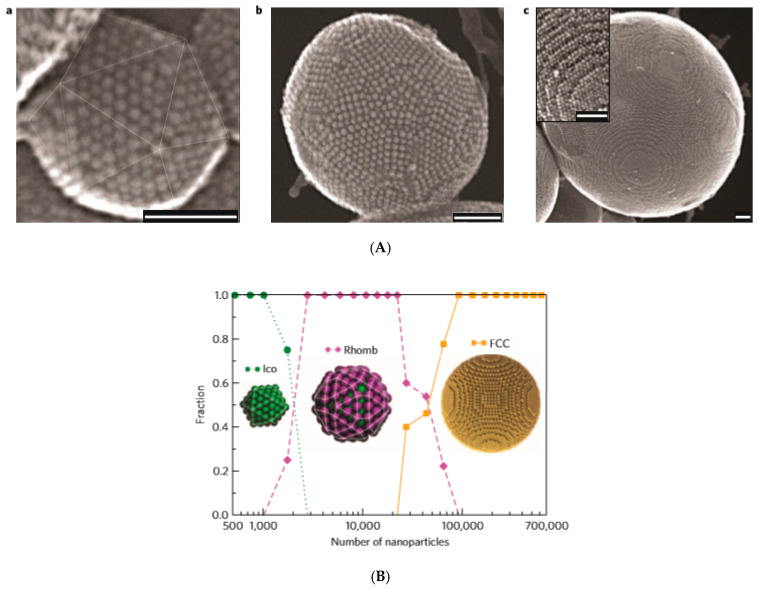Figure 2.
Entropy-driven supraparticle assembly. (A) Secondary electron scanning transmission electron microscopy (SE-STEM) images of typical supraparticles containing oleic acid coated cobalt–iron oxide nanoparticles initially dispersed in cyclohexane (core diameter 6 nm; hydrodynamic diameter 9 nm). (a) Supraparticle with a diameter of 105 nm with Mackay icosahedral symmetry, as indicated by the thin lines. (b) 216 nm supraparticle with anti-Mackay rhombicosidodecahedral structure. (c) 734 nm supraparticle consisting of a single face-centered cubic (FCC) crystal domain. Inset: a magnified view of the step edges of the FCC supraparticle. All scale bars are 50 nm. (B) Size dependence of the cluster structure–event-driven molecular dynamics (EDMD) numerical simulation. Structural transition from a Mackay icosahedron (Ico) to an anti-Mackay rhombicosidodecahedron (Rhomb) to a face-centered cubic (FCC) cluster, as observed for supraparticles consisting of nanoparticles. The fraction of structures, based on 121 supraparticles is plotted as a function of the number of nanoparticles per supraparticle. Fourteen icosahedra, 63 rhombicosidodecahedra, and 44 FCC clusters were observed. (Reprinted by permission from Copyright Clearance Center: Nature, Nature Materials, [138], Copyright 2015).

